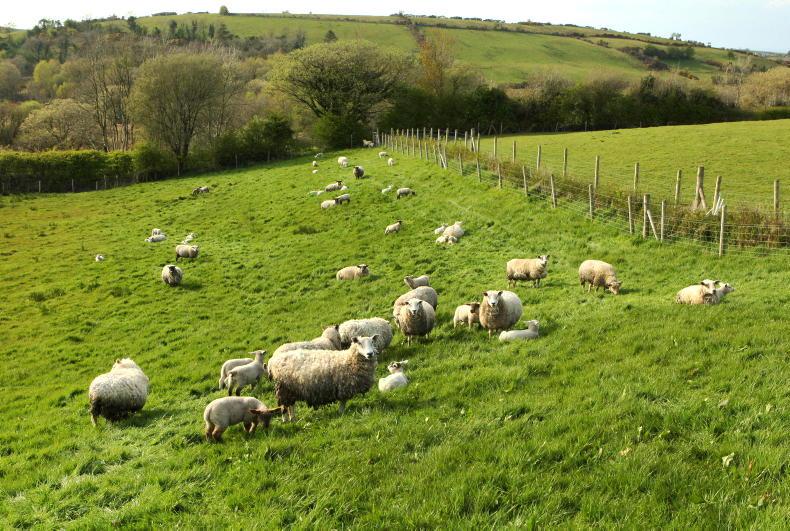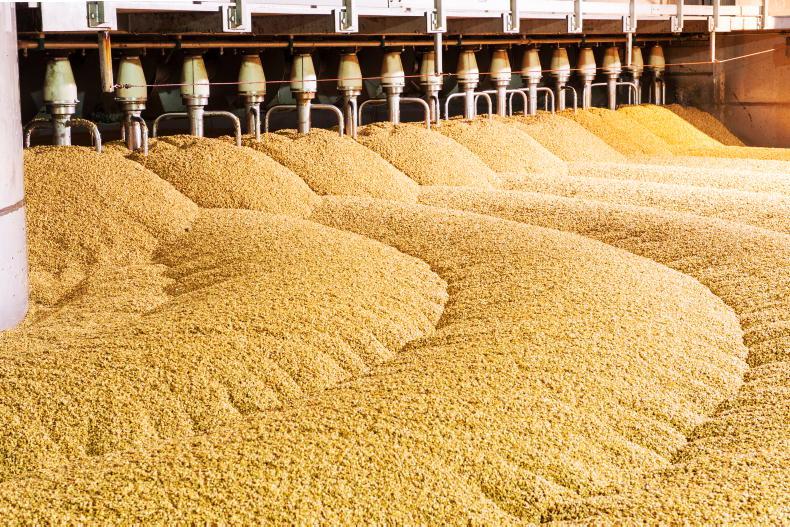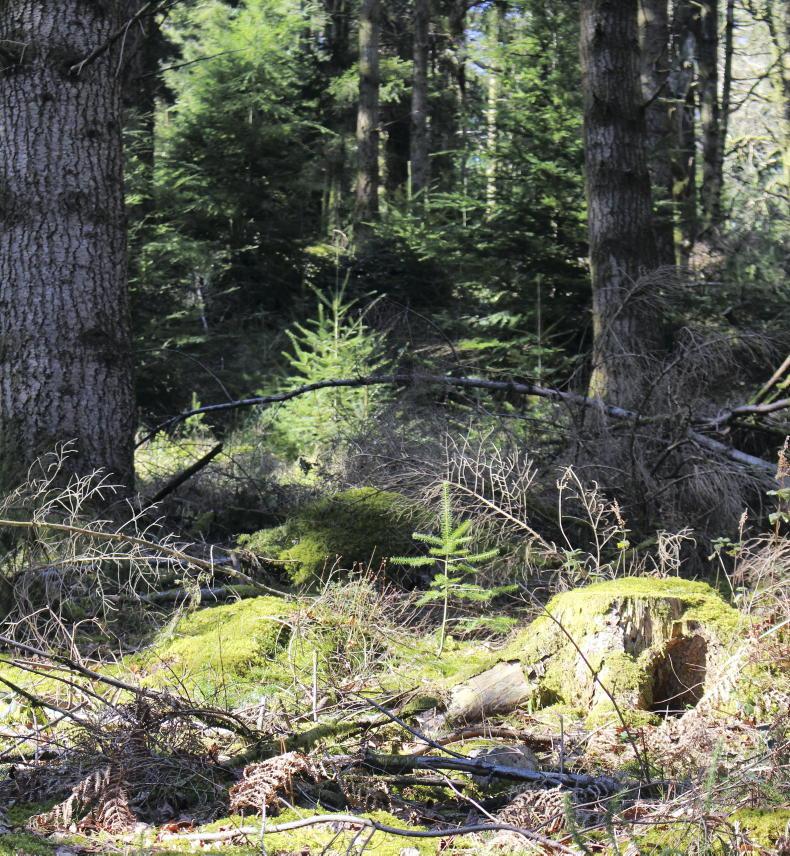As part of the data collection process to produce the financial benchmarks for the programme farmers, several other pieces of information were collected to produce a carbon benchmark report. Unfortunately, due to the Covid-19 restrictions for most of 2021, it is only in recent months that I had the opportunity to provide on-farm feedback to the farmers.
To get an insight into the areas to focus on, I accompanied Phelim Connolly, agri-environment adviser with the College of Agriculture Food and Rural Enterprises (CAFRE), to the farm of Roy and Marilyn Mayers, Tempo, Co Fermanagh.
Phelim provided feedback on the Mayers’ carbon mitigation report, which highlights areas where improvements can be made.
While there are various viewpoints expressed, climate change is happening as a result of emissions of greenhouse gases to the atmosphere.
As a result, the UK government is committed to reducing emissions to net zero carbon by 2050. As such, all sectors have a role to play with agriculture and land use being important players in achieving net zero carbon in the UK. So how do we reduce our carbon footprint? The starting point from a farmer’s perspective would be to first establish the farm’s carbon footprint.
While there are various calculators commercially available to do this, following investigation from CAFRE’s sustainable land management branch, the Agrecalc application from Scotland’s Rural University College (SRUC) was deemed the most suitable for Northern Ireland farming systems. It is acknowledged, however, that the Agrecalc calculator is being continually developed and that new updates coming on stream should provide better information in the future.
It is with this in mind that Phelim emphasised that the aim of the report is to raise awareness first and foremost about the different gases. It is also giving a point in time figure and is a starting point for the business and an opportunity for discussion.
Phelim went on to note that when the carbon emissions report is run again, it is envisaged that farm level changes and the ability of the programme to include other parameters will lead to improved figures. However, the primary aim for all farms should be to reduce emissions rather than simply offset through sequestration.
Each of the farmer’s carbon intensity for their sheep enterprise are shown in Figure 1 with the various areas noted. The figures of carbon intensity are expressed in kg of carbon dioxide equivalent (CO2e) per kg deadweight (kg dwt).
Enteric fermentation is the biological process of digestion within the rumen of sheep, which releases methane and this release of methane is a carbon emission and can be expressed as a CO2e.
There are three areas for improvement indicated within the report. These are limited, medium and high levels of opportunity for improvement.
The two highlighted in the table are medium and high as the unhighlighted areas all have limited opportunity for improvement.
Main farm efficiency themes
Phelim explained that there are four main efficiency farming themes that can help to reduce a farm’s carbon footprint:
Better nutrient management.Better land management.Better livestock management.Energy efficiency and renewable energy.Phelim noted that in practical terms for the Mayers’ farm that the report would highlight any hotspots within the sheep enterprise where there was potential to improve. This, in turn, should reduce on-farm emissions and also support increased profitability and farm resilience.
It should be noted that the main areas to focus on for all the programme farms is primarily fertiliser and then purchased feed.
When putting in place a farm carbon mitigation plan for Roy and Marilyn, Phelim acknowledged the good work that has already taken place on the farm in terms of improved efficiencies.
Phelim also acknowledged the Mayers’ use of renewable energy, the on-farm water source which is improving sustainability and also the significant levels of sequestration taking place from the five hectares of planted woodland on farm.
Following discussion and agreement with the Mayers, Phelim noted a few areas that could be addressed. However, Phelim stressed that while it was important to focus on these areas to reduce carbon emissions, they must complement the existing farm objectives:
Improved nutrient efficiency to reduce inorganic nitrogen. This could be addressed through the Mayers’ continual inclusion and development of clover management on the farm.Improved animal performance: this could be addressed by increasing the daily liveweight gain (DLWG) of the lambs through improved ewe efficiency and monitoring this progress through their farm management software.Reduction in purchased feed: this could be partially addressed by their continued focus on making high protein silage from their clover swards. This, in turn, would be backed up by regular silage testing and targeting this silage to the high priority stock.On the area of increasing carbon sequestration, which is another aspect of the report, Phelim noted that the inclusion of multispecies swards such as chicory and plantain, which the Mayers have been trialling, would be one way to increase soil organic matter and protect the carbon storage on the farm.
Take-home messages
While farmers could be forgiven for being somewhat confused by the many figures, the following points should be borne in mind in relation to a farm’s carbon footprint:
Carbon reduction on the farm is a challenge. Each small on-farm improvement can make a difference.Farmers need to continually measure in order to manage their system.There is no one-size-fits-all scenario as every farm is different.Improving the technical efficiency on the farm should not only improve profitability, but also have the added benefit of reducing the farm’s carbon footprint.
As part of the data collection process to produce the financial benchmarks for the programme farmers, several other pieces of information were collected to produce a carbon benchmark report. Unfortunately, due to the Covid-19 restrictions for most of 2021, it is only in recent months that I had the opportunity to provide on-farm feedback to the farmers.
To get an insight into the areas to focus on, I accompanied Phelim Connolly, agri-environment adviser with the College of Agriculture Food and Rural Enterprises (CAFRE), to the farm of Roy and Marilyn Mayers, Tempo, Co Fermanagh.
Phelim provided feedback on the Mayers’ carbon mitigation report, which highlights areas where improvements can be made.
While there are various viewpoints expressed, climate change is happening as a result of emissions of greenhouse gases to the atmosphere.
As a result, the UK government is committed to reducing emissions to net zero carbon by 2050. As such, all sectors have a role to play with agriculture and land use being important players in achieving net zero carbon in the UK. So how do we reduce our carbon footprint? The starting point from a farmer’s perspective would be to first establish the farm’s carbon footprint.
While there are various calculators commercially available to do this, following investigation from CAFRE’s sustainable land management branch, the Agrecalc application from Scotland’s Rural University College (SRUC) was deemed the most suitable for Northern Ireland farming systems. It is acknowledged, however, that the Agrecalc calculator is being continually developed and that new updates coming on stream should provide better information in the future.
It is with this in mind that Phelim emphasised that the aim of the report is to raise awareness first and foremost about the different gases. It is also giving a point in time figure and is a starting point for the business and an opportunity for discussion.
Phelim went on to note that when the carbon emissions report is run again, it is envisaged that farm level changes and the ability of the programme to include other parameters will lead to improved figures. However, the primary aim for all farms should be to reduce emissions rather than simply offset through sequestration.
Each of the farmer’s carbon intensity for their sheep enterprise are shown in Figure 1 with the various areas noted. The figures of carbon intensity are expressed in kg of carbon dioxide equivalent (CO2e) per kg deadweight (kg dwt).
Enteric fermentation is the biological process of digestion within the rumen of sheep, which releases methane and this release of methane is a carbon emission and can be expressed as a CO2e.
There are three areas for improvement indicated within the report. These are limited, medium and high levels of opportunity for improvement.
The two highlighted in the table are medium and high as the unhighlighted areas all have limited opportunity for improvement.
Main farm efficiency themes
Phelim explained that there are four main efficiency farming themes that can help to reduce a farm’s carbon footprint:
Better nutrient management.Better land management.Better livestock management.Energy efficiency and renewable energy.Phelim noted that in practical terms for the Mayers’ farm that the report would highlight any hotspots within the sheep enterprise where there was potential to improve. This, in turn, should reduce on-farm emissions and also support increased profitability and farm resilience.
It should be noted that the main areas to focus on for all the programme farms is primarily fertiliser and then purchased feed.
When putting in place a farm carbon mitigation plan for Roy and Marilyn, Phelim acknowledged the good work that has already taken place on the farm in terms of improved efficiencies.
Phelim also acknowledged the Mayers’ use of renewable energy, the on-farm water source which is improving sustainability and also the significant levels of sequestration taking place from the five hectares of planted woodland on farm.
Following discussion and agreement with the Mayers, Phelim noted a few areas that could be addressed. However, Phelim stressed that while it was important to focus on these areas to reduce carbon emissions, they must complement the existing farm objectives:
Improved nutrient efficiency to reduce inorganic nitrogen. This could be addressed through the Mayers’ continual inclusion and development of clover management on the farm.Improved animal performance: this could be addressed by increasing the daily liveweight gain (DLWG) of the lambs through improved ewe efficiency and monitoring this progress through their farm management software.Reduction in purchased feed: this could be partially addressed by their continued focus on making high protein silage from their clover swards. This, in turn, would be backed up by regular silage testing and targeting this silage to the high priority stock.On the area of increasing carbon sequestration, which is another aspect of the report, Phelim noted that the inclusion of multispecies swards such as chicory and plantain, which the Mayers have been trialling, would be one way to increase soil organic matter and protect the carbon storage on the farm.
Take-home messages
While farmers could be forgiven for being somewhat confused by the many figures, the following points should be borne in mind in relation to a farm’s carbon footprint:
Carbon reduction on the farm is a challenge. Each small on-farm improvement can make a difference.Farmers need to continually measure in order to manage their system.There is no one-size-fits-all scenario as every farm is different.Improving the technical efficiency on the farm should not only improve profitability, but also have the added benefit of reducing the farm’s carbon footprint. 








SHARING OPTIONS